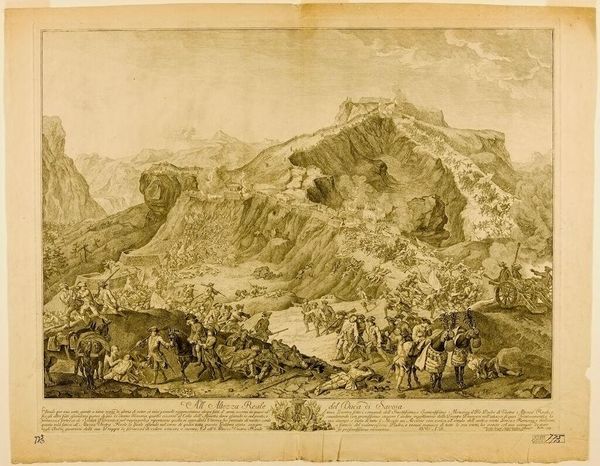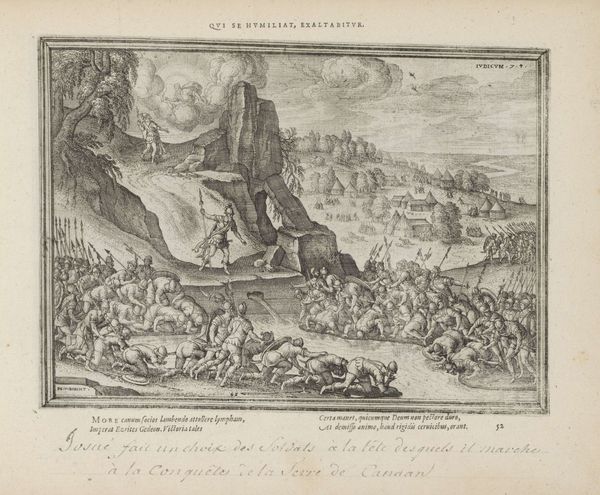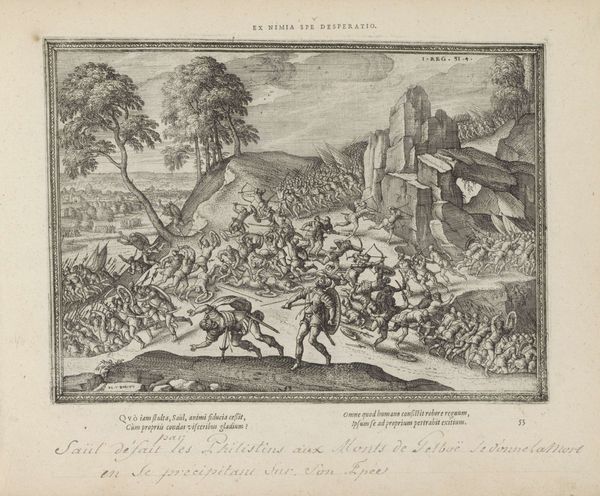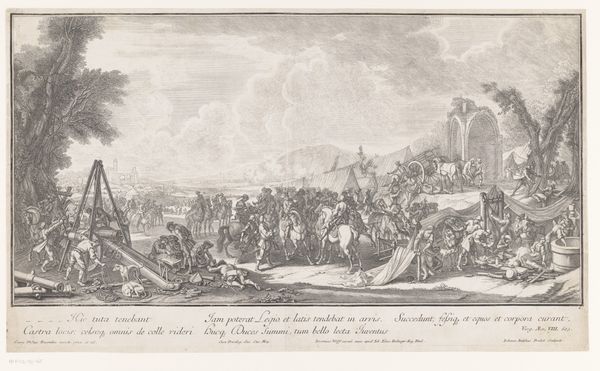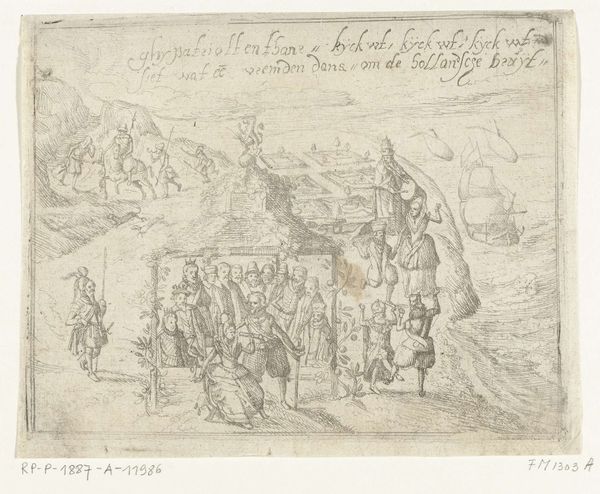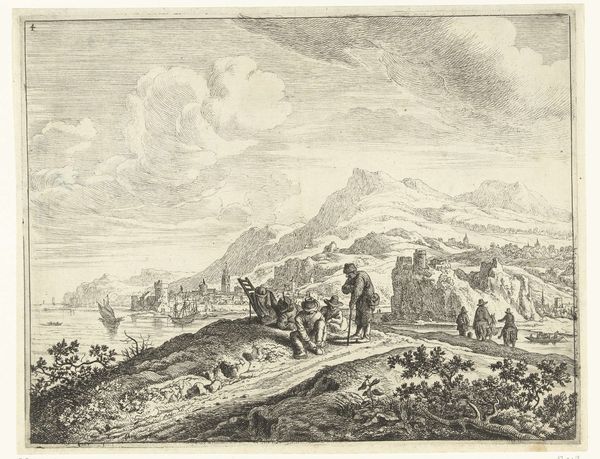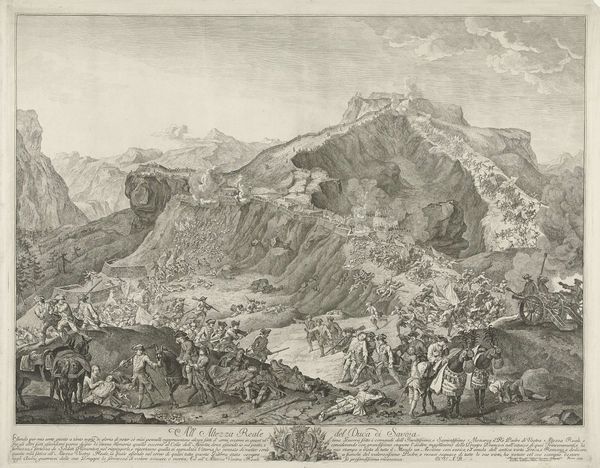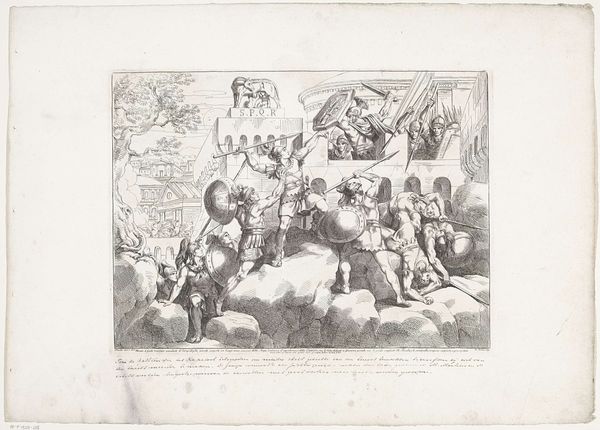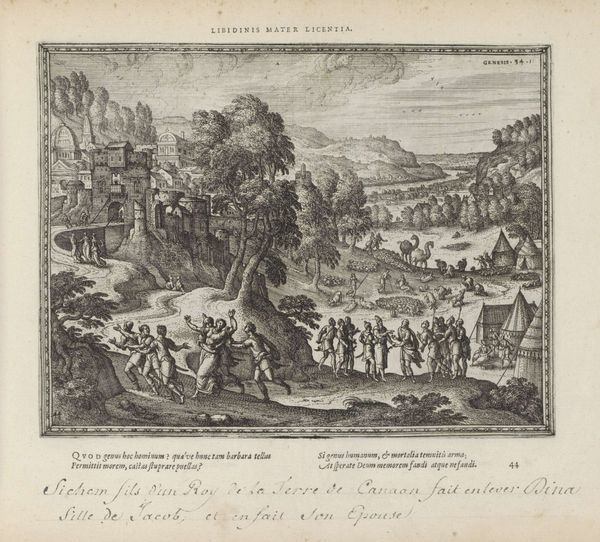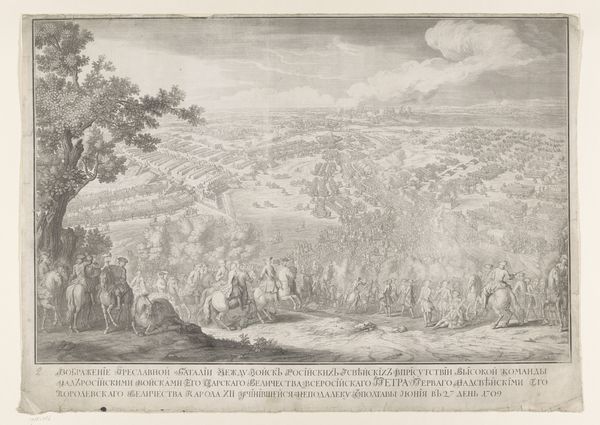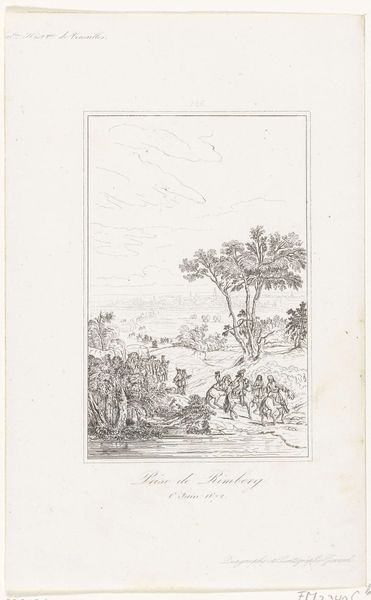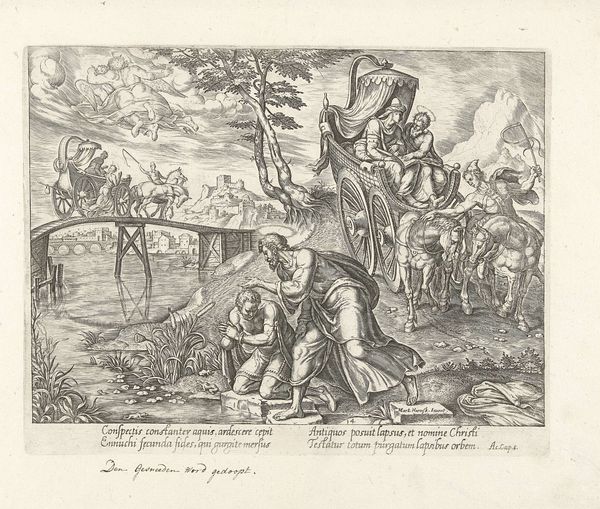
Napoleon en zijn leger trekken over een berg, op de voorgrond de vrouwelijke personificatie van Italië 1808
0:00
0:00
drawing, print, pen, engraving
#
drawing
#
neoclacissism
#
allegory
#
narrative-art
# print
#
modern-moral-subject
#
landscape
#
figuration
#
classicism
#
romanticism
#
mountain
#
line
#
pen
#
history-painting
#
academic-art
#
engraving
Dimensions: height 332 mm, width 382 mm
Copyright: Rijks Museum: Open Domain
Curator: Teodoro Matteini created this intriguing print in 1808, titled “Napoleon en zijn leger trekken over een berg, op de voorgrond de vrouwelijke personificatie van Italië”. It seems to depict Napoleon and his army crossing a mountain, with a female personification of Italy in the foreground. What are your initial impressions? Editor: Stark and mournful. The landscape, defined by sparse lines, conveys a powerful desolation. There's this feeling of a violated land and a suppressed feminine spirit, despite the glory suggested by the advancing army. Curator: I notice you’re responding strongly to the image of the woman. The iconography here seems particularly pointed, wouldn't you agree? A broken Italy offering… something, to a cherub-like figure? I read it as a kind of mourning, almost offering up her children or her future. Editor: Absolutely. That prostrate female figure immediately reads as a fallen or subjugated symbol of Italy, a visual trope that speaks volumes about power dynamics and national identity. Consider how the mountain itself acts as a barrier and an imposing symbol of the Alps, emphasizing the difficulty of the crossing and, symbolically, the challenge to Italian sovereignty. The tiny struggling figures marching upward certainly amplify this, creating this imposing force versus vulnerable nation. Curator: I wonder, looking at it through the lens of Neoclassicism blended with Romanticism, if Matteini wasn't trying to tap into both the ideals of heroism—Napoleon as a classical hero conquering the Alps, as referenced in classic works like Jacques-Louis David’s Napoleon at the Saint-Bernard Pass—and a deep sense of national sorrow or ambivalence towards the French presence in Italy. There's almost a staged theatricality to it. Editor: Yes, that theatricality serves a specific function, I think. Matteini leverages classical and romantic allegories—angels, personified nations—to explore themes of dominance and resistance and give insight to psychological themes. But if you remove the figures in the mountain for example, this stark landscape and dramatic contrast would exist irrespective of its context in that period of time. The drawing itself becomes allegorical of what conquest leaves behind: grief, solitude and loss of spirit. Curator: Interesting! Looking again, the figures really amplify what is essentially the primary thing the landscape communicates: stark desolation, with pockets of defiance and promise for Italy to rebuild. Editor: Exactly! A somber moment rendered with delicate precision. I walk away thinking less of what Napoleon achieved, and more about what his army trampled to reach new heights.
Comments
No comments
Be the first to comment and join the conversation on the ultimate creative platform.
